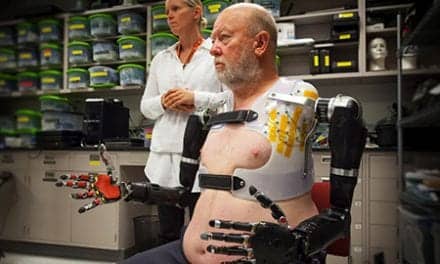The latest National Trends in Disability Employment—Monthly Update (nTIDE), indicates that Americans with disabilities remain behind in economic growth.
The nTIDE is issued by Kessler Foundation and University of New Hampshire’s Institute on Disability (UNH-IOD).
The Bureau of Labor Statistics’ Jobs Report, which was released July 3, states that the employment-to-population ratio decreased from 26.4% in June 2013 to 25.6% in June 2014 for working age individuals with disabilities. For individuals without disabilities, the employment-to-population ratio increased from 71.2% in June 2013 to 72.2% in June 2014. The employment-to-population ratio represents the percentage of individuals who are working relative to the total population.
A news release from both Kessler and UNH-IOD notes that June’s jobs data also suggest the percentage of individuals with disabilities looking for work decreased from 5.0% in June 2013 to 4.3% in June 2014. This percentage is the number of individuals looking for work divided by the number of individuals in the total population multiplied by 100. For individuals without disabilities, the percentage looking for work also reduced from 5.9% in June 2013 to 4.7% in June 2014.
Andrew Houtenville, PhD, UNH-IOD associate professor of economics, says the year is not looking good for individuals with disabilities, “We are now at mid-year, and the monthly employment-to-population ratio has yet to increase over the same month last year.”
John O’Neill, PhD, echoes Houtenville’s sentiment, adding, “The persistent bad news for people with disabilities is disconcerting and heightens the need for new and innovative strategies to expand employment opportunities of people with disabilities.”
To this end, the release also highlights new strategies being implemented in an effort to expand employment opportunities, including the social enterprise business model. This model is intended to create jobs while benefitting the community. Several social enterprises are funded by employment grants from Kessler Foundation and provide competitive jobs for individuals with disabilities, the release says. These include food truck enterprise Destination Desserts in St. Louis, which employs individuals with brain injury and offers job training and employment opportunities in food preparation, sanitation, and food sales.
Rodger DeRose, president and chief executive officer of Kessler Foundation, points out, “…Now, individuals who struggled to find employment in the past are earning market wages, gaining confidence and skills, and contributing their talents in an integrated setting—working side-by-side with colleagues without disabilities,” DeRose says.
The release reports that in June 2014, among workers aged 16 to 64 years old, the 3,934,000 workers with disabilities represented 2.8% of the total 139,280,000 workers in the US.
O’Neill points out that the figures in nTIDE are not seasonally adjusted. As the collection of disability employment statistics began a few years ago, it will take time for seasonal trends to become evident, O’Neill says.
The release also emphasizes that the National Trends in Disability Employment—Update are based upon Bureau of Labor Statics numbers, but are not identical. The University of New Hampshire has customized the statics in order to efficiently combine the statistics for men and women of working age, ages 16 to 64 years.
Source(s): Kessler Foundation, UNH-IOD





